
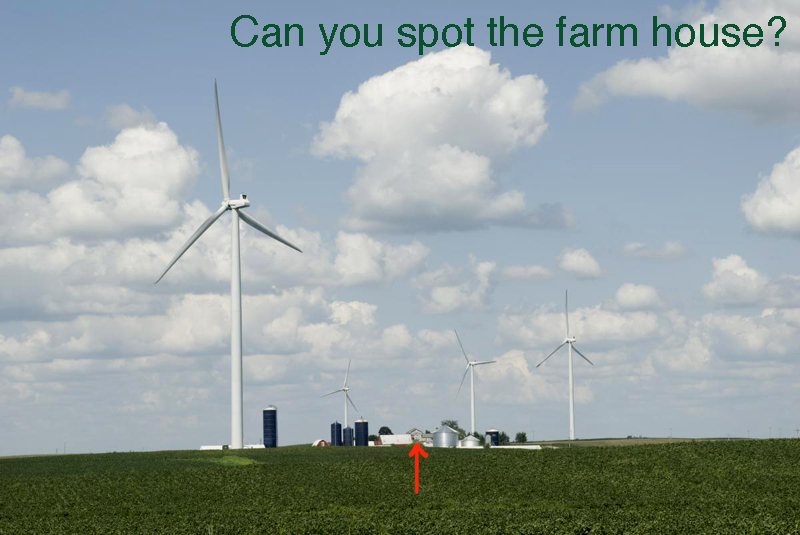
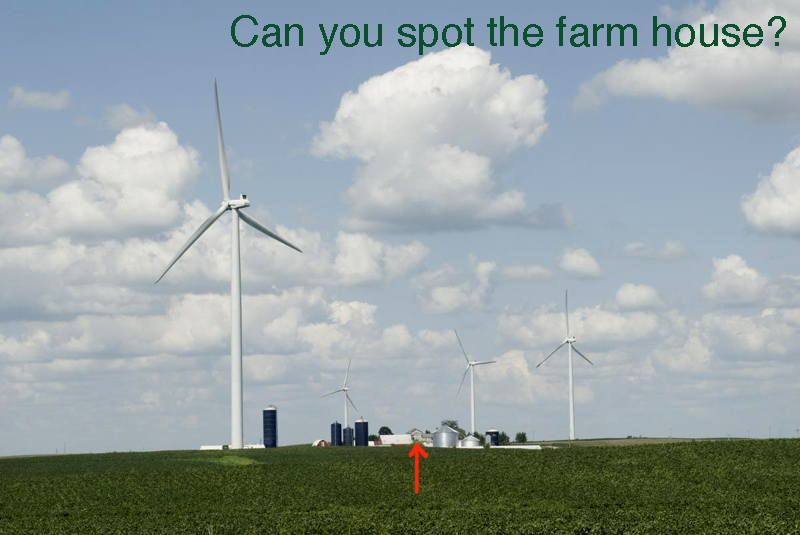
Wind turbines on a Wisconsin Farm
While I support the overall rule because it will promote the development of wind in Wisconsin, the rule fails to provide a much-needed safety net for people whose health declines because of a Wind Turbine located near their home.
-PSC Commissioner Lauren Azar
CLICK HERE TO DOWNLOAD THE FINAL WIND RULES FROM THE PUBLIC SERVICE COMMISSION
SOURCE: PSC DOCKET # 1-AC-231
From PSC commissioner Lauren Azar
To The Honorable Fred Risser The Honorable Michael Sheridan
The State Senate The State Assembly
State Capitol, Room 220 South State Capitol, Room 211 West
Madison, WI 53702 Madison, WI 53702
Re:Wind Siting Rules, Clearinghouse Rule 10-057
Dear Senate President Risser and Speaker Sheridan:
I write to explain my concurrence with the Commission’s rule on the siting of certain wind energy systems (Wind Turbines) in Wisconsin.
While I support the overall rule because it will promote the development of wind in Wisconsin, the rule fails to provide a much-needed safety net for people whose health declines because of a Wind Turbine located near their home.
The safety net I propose would be a minimal burden to wind developers while simultaneously protecting Wisconsin citizens who are sensitive to the noise emitted from Wind Turbines.
Among other things, 2009 Wisconsin Act 40 requires the Commission to develop rules that “provide reasonable protection from any health affects” associated with Wind Turbines. Wis. Stat. § 196.378(4g)(b).
There is substantial evidence that noise from Wind Turbines could negatively impact the health of a small percentage of the population.
To better ensure compliance with Act 40’s mandate, I proposed the following safety net: under limited circumstances, the owner of a Wind Turbine must purchase, at fair market value, the home of someone who can prove that a nearby Wind Turbine is directly causing a significant adverse health outcome. [1]
Unfortunately, at this time, we cannot accurately identify the precise line between safe levels of noise from Wind Turbines and those levels that will negatively affect human health.
Nor do we know why a small percentage of the population is affected more negatively by Wind Turbines than the rest of the population.
As new information becomes available, the Commission can revise this rule.
While more study is needed to better understand the full health impacts of Wind Turbines, it is important that we establish some remedy for the people who can prove that their health is being compromised by nearby Wind Turbines before the Commission has an opportunity to revise this rule.
To be clear, this safety net does not include awarding damages to the injured party; instead, it allows the injured party to move quickly from the area, thereby abating health concerns.
The safety net would be limited to landowners who provide evidence (in the form of a certification) from a licensed Wisconsin medical doctor that one or more Wind Turbines have directly caused a significant adverse health outcome on the injured party.
The only impact to the owner of the Wind Turbine(s) would be the need to resell the house.
Hence, the proposed safety net would not be an onerous requirement on the Wind Turbine owner and should not hamper wind development in Wisconsin.
The safety net could be structured as follows:
“PSC 128.XX Individual Hardships. If the owner of a nonparticipating residence experiences adverse health outcomes that are shown to be the direct result of the operation of a wind energy system, the owner of the nonparticipating residence may petition the political subdivision for mitigation of the adverse health outcomes.
The petition for mitigation shall be referred to the Commission, which may order mitigation of the adverse health outcomes.
A medical doctor licensed in the State of Wisconsin shall attest that that one or more wind turbine(s) have caused a significant adverse health outcome on the injured party before any relief may be granted under this section.
Mitigation may include requiring the owner of the wind energy system to purchase the nonparticipating residence at fair market value.
Note: The Wind Siting Council may make recommendations with respect to the form and type of information that is required to show that adverse health outcomes are the direct result of the operation of a wind energy system.
Absent a safety net provision like this, it is unclear how an injured party could obtain mitigation of adverse health outcomes from a Wind Turbine owner.
If they are unable to sell their property for fair market value, injured parties would be forced to file suit against the owner of a Wind Turbine.
This could require the injured party to incur significant legal costs that are not recoverable in a lawsuit and may dwarf the value of the home.
The State of Wisconsin should not place its citizens in this position.
In conclusion, while I concur with the rule as a package, I remain concerned that this rule fails to protect the most vulnerable of our community and, therefore, I must qualify my support of this important rule. When this rule is referred to the appropriate standing committees, please forward a copy of this letter with the rule.
Sincerely,
Lauren Azar
Commissioner
[1] The operation of this safety net proposal is not unprecedented. The Commission recently identified that the purchase of property at fair market value was a potential remedy for two landowners affected by a large wind energy development. Because the two landowners had a significant number of Wind Turbines within view from their homes, the Commission required mitigation, including the possibility that the utility purchase the properties at fair market value. The utility did not object to this potential remedy and has since purchased the properties.
SECOND FEATURE
In Wisconsin, Facts About ‘Green Job’ Creation Elusive as the Wind
SOURCE MacIver News Service | September 1, 2010
By Bill Osmulski
MacIver News Service Investigative Reporter
[Madison, Wisc...] Although they are touted and promoted by policy makers and opinion leaders across the state, accurately defining and keeping track of ‘green jobs’ has proven nearly impossible in Wisconsin.
Take, for example, ‘green jobs’ associated with the wind industry.
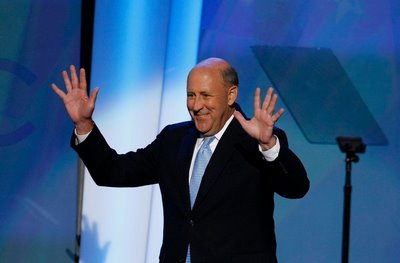
Wisc. Governor JimDoyle (D)
“Clean energy technology and high-end manufacturing are Wisconsin’s future,” Governor Jim Doyle said in his final State of the State address. “We have more than 300 companies and thousands of jobs in the wind industry.”
That statistic is impossible to verify.
The State of Wisconsin does not track those companies nor the jobs within the industry.
When contacted, the Office of Energy Independence (an agency created by Governor Doyle in 2007) directed MacIver News to Wisconsin Wind Works, a self-described “consortium of manufacturers representing the wind manufacturing supply chain within Wisconsin.”
The advocacy group maintains an online wind energy-related supply chain database, although a routine examination of the data proved just how unreliable the figures are.
When the online, searchable database was utilized earlier this summer, it listed 340 companies in Wisconsin connected to the wind industry, a fact which, without additional investigation would appear to be in line with the Governor’s statement.
However, further examination showed many of those companies were not currently serving the wind industry and were only listed because they someday could serve the wind industry.
For example, the database listed 38 manufacturers, but only 24 of them have anything to actually do with the wind energy sector presently.
Of those 24 Wisconsin manufacturers, only eight were categorized as primary suppliers.
Another four companies were listed as both primary and secondary suppliers. A MacIver News Service reporter contacted all eight primary suppliers and the four companies listed as primary/secondary suppliers in our initial query and what we found further eroded the credibility of Governor Doyle’s claims.
When contacted, the companies listed as both primary and secondary suppliers all described themselves merely as secondary suppliers. That means they produce products that are not exclusive to the wind energy.
For example, Bushman Equipment manufactures lifts that move heavy pieces of equipment, which, among many other uses, can be used to handle wind turbines.
Wisconsin Wind Works’ database is not only generous with the number of companies within their supply chain it associates as being primary suppliers, there are issues with the actual job numbers listed for each company as well.
Many of the figures are either inflated, the jobs are not located in Wisconsin, or they cannot be tied to wind energy.
For example, Rexnord Industries was one of the eight Wisconsin manufacturers listed in our query as directly serving the wind energy industry. The database shows the company has 6,000 employees.
Yet a Rexnord official told the MacIver News Service that the company only has 1,500 employees in Wisconsin, and only five of those have jobs which are directly tied to the wind industry.
Wisconsin Wind Works’ database says Orchid International has 600 employees, but a company spokesperson told MacIver it only has 150.
Amsoil Inc. in Superior has 236 employees listed in the Wisconsin Wind Works database, but a company representative told the MacIver News Service that only 6 of them work on wind energy-related products.
In all, at the time of our search, the database claimed 7,632 jobs among the eight manufacturers that were current primary suppliers to the wind industry. Yet, the MacIver News Service was only able to identify 31 jobs at those companies which were specifically tied to wind energy related products.
Manufacturers told MacIver News that other employees might work on wind-related products occasionally, but it does not represent the bulk of their workload.
Another 1,077 workers are listed among the secondary suppliers and we did not investigate that claim.
VAL-FAB, one of the companies listed as both a primary and secondary supplier, explained to MacIver News that it initially had high hopes for the wind energy industry that never materialized. The company specializes in fabrication for the energy sector.
William Capelle, Director of Business Development at VAL-FAB, said “At first we thought we might be able to manufacture the actual towers, but it turns out 90 percent of those are imported from Spain.”
Since the MacIver News Service first examined the Wisconsin Wind Works database, the number of companies listed has increased to 360.
A reporter attempted to contact the organization for comment about the veracity of their data, but Wisconsin wind Works, which solicits members by selling itself as the
“preferred partner of wind energy professionals,” did not respond.
They are, however, holding a Wind Energy Symposium in Milwaukee on October 13th.
Meanwhile the Office of Energy Independence continues to pursue the Doyle Administration’s green energy policies.
As Doyle said during his final State of the State address, “anyone who says there aren’t jobs in the clean energy economy had better open their eyes.”
There is no doubt that some jobs in the wind industry exist in Wisconsin. The accurate number of these ‘green jobs’ is proving to be, at best, elusive
Representatives of Doyle’s office did not respond to repeated request for comments regarding the information contained within this article.
THIRD FEATURE
What to expect when you're expecting wind turbines close to 500 feet tall:
Photos from the Town of Glenmore in Brown County Wisconsin
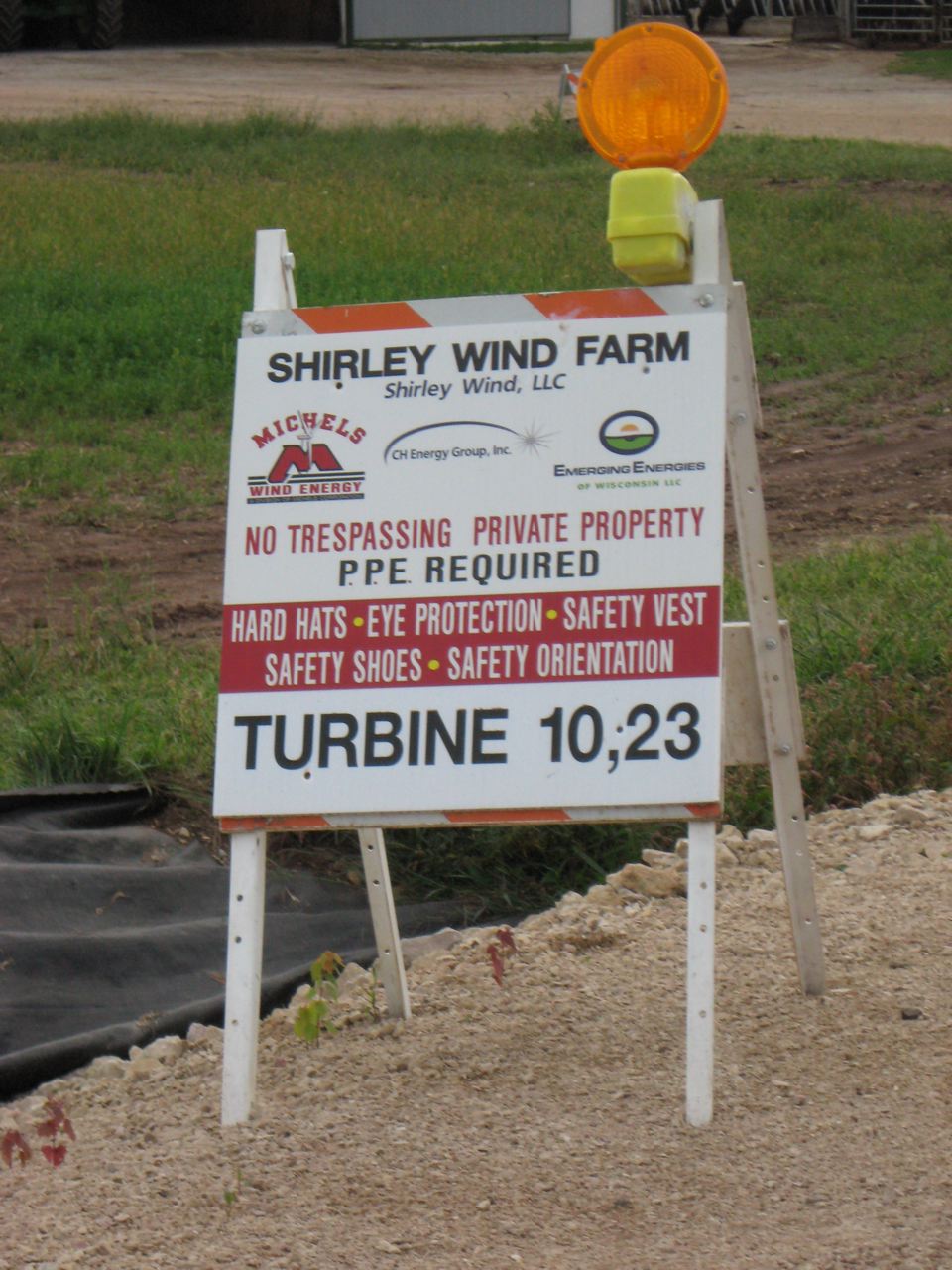

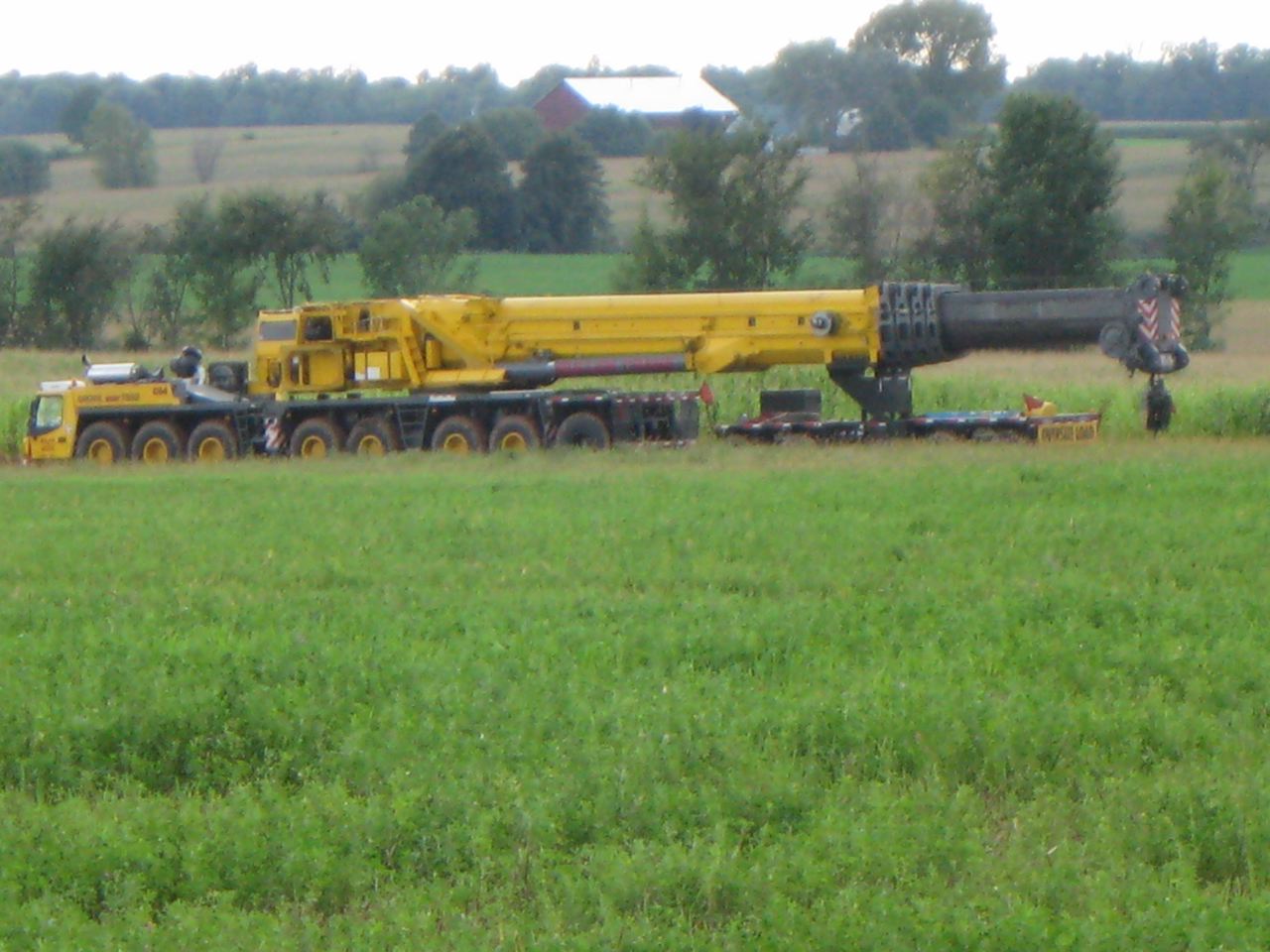
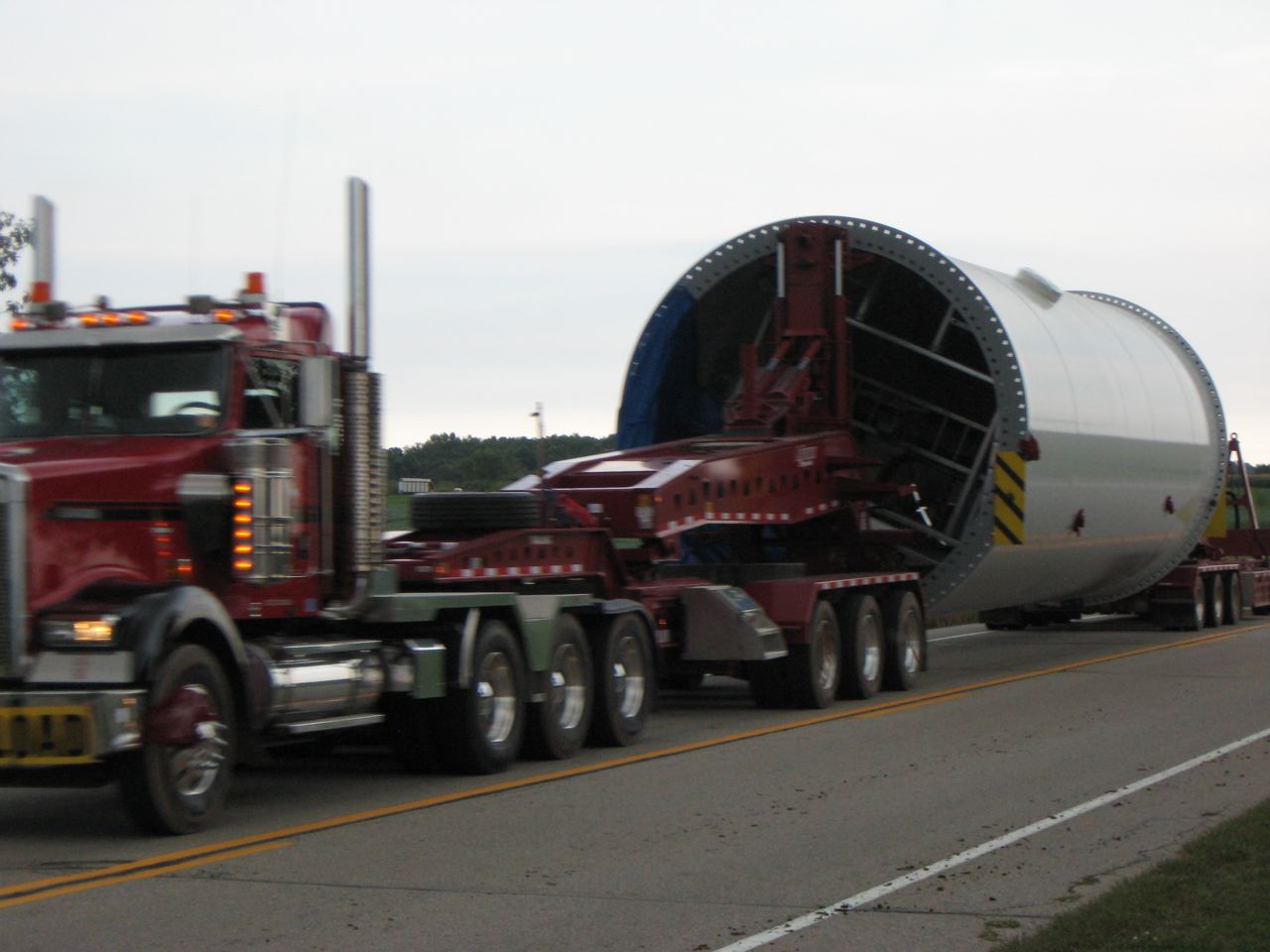
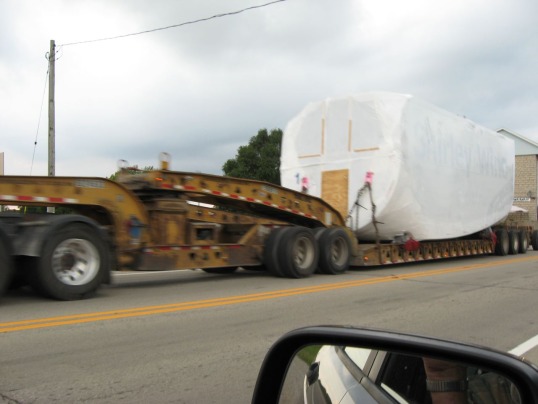

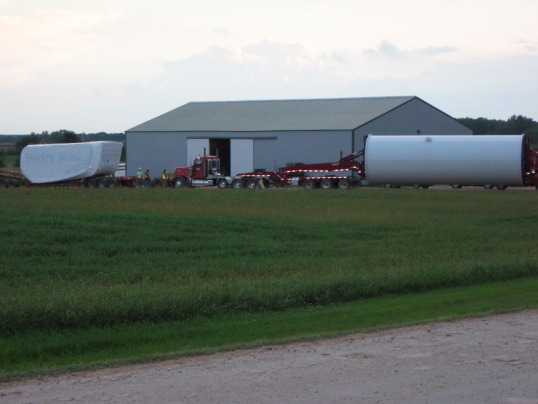
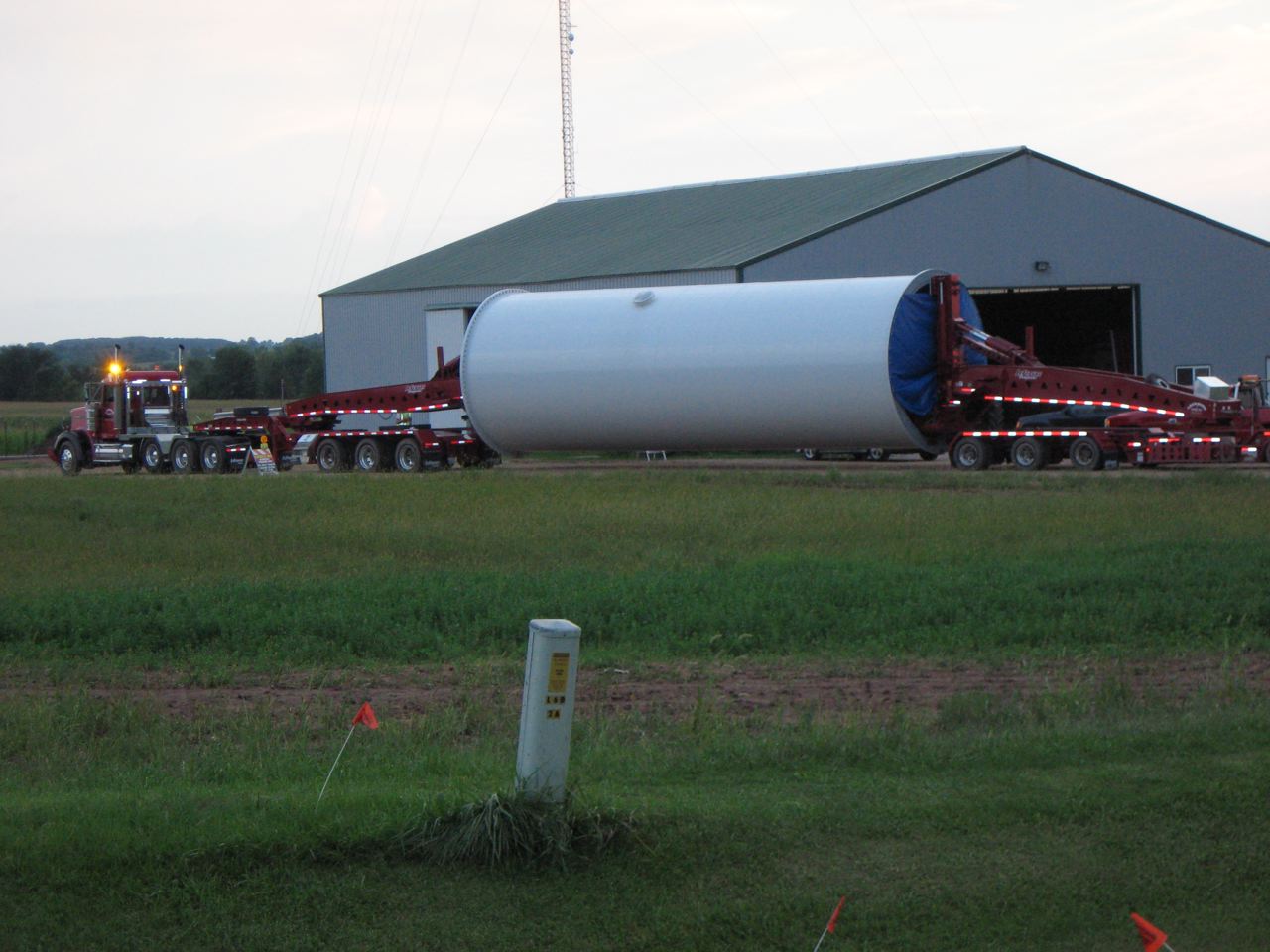
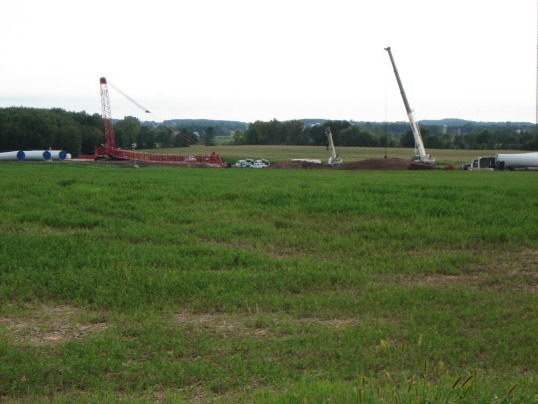
Construction underway on Brown Co. wind farm
8 turbines in Town of Glenmore
TOWN OF GLENMORE - Construction is underway on Brown County's first industrial wind farm. Eight wind turbines are being built in the Town of Glenmore in southern Brown County.
The developer, Wisconsin-based CH Shirley Wind, LLC, says construction is to be completed by the end of the year. The 8 wind turbines are expected to generate enough power to supply approximately 8,000 homes per year.
The wind turbines will stand 492 feet tall.
"We are hoping to generate power by the end of September on at least one turbine. Hopefully all 8 by the end of October," said John Roberts, the construction manager for the project.
The turbines will also provide some extra income for the four families hosting them on their properties.
"They're not just doing it for the money. They like the idea of being green and using their farm for something like this," said Roberts.
Though, like most wind developments, a number of neighbors aren't too happy with the project.
"The projects right now, with the setback rules we have, are just too close for people to live in that proximity to an electrical generator of that size," said Jamie Fletcher, who lives in the Town of Glenmore.
Fletcher has been working to stop all large-scale wind development in southern Brown County. She believes wind turbines cause health problems, mainly from all the noise they make.
"Insomnia, shadow flickers, causing everything from nauseasness to epileptic seizures and I don't want to put my family through that or my animals," said Fletcher.
However, a state committee that studied the issue recently found no health effects from the turbines. Those working on the project in Glenmore also say the turbines being built there have new technology that make them less noisy.
"They're a little bit higher and they turn a little bit slower and because they turn slower, there is actually less noise," said Roberts.
The Shirley Wind project is not part of a highly publicized proposal to build 100 wind turbines in several Brown County communities. That proposal, known as the Ledge Wind Energy Project, has not been voted on yet by the state Public Service Commission. It is being developed by a Chicago-based company called Invenergy.
Opponents, like Jamie Fletcher, say the 8 turbine project in Glenmore will be an example of why other projects should be stopped.
"Whatever happens out here, I pray it's a wake-up call for the rest of the state," she said.
Both sides will continue to debate whether wind development is what is best for Wisconsin.
THIRD FEATURE: A LETTER FROM MAINE:
Note: Like Wisconsin, Maine also passed law that streamlines wind siting for developers by removing local control and relaxing restrictions. Here is what Maine residents are saying two years later:
Though I’d suspected the news would eventually arrive, I still wasn’t ready when I got it.
Word came recently that a wind speed test tower, the harbinger of a future wind turbine development, would soon be erected just north of my property in Lexington Township.
Two more associated towers are to be located in Concord, the next township to the east.
My town is now among the unfortunate that have been infected with the virus of wind-energy sprawl. Industry activity, lately, has been substantial in our area and our town lies within the new expedited permitting zone. It was bound to happen.
I’ve been working to stop wind-sprawl on Maine’s rural landscape for almost a year.
However, until now, I’ve not known the full complement of the frustration, indignation and betrayal felt by so many Mainers seeing their lives turned upside down by the reckless and uncaring intrusion of this industry on their homes and property — all with the complicity of our state government.
I have worked beside many of these people for months, but only now do I fully understand their perspective.
My wife and I believed we’d spend the rest of our days in Lexington, living simply, and feeling fortunate to be surrounded by Maine’s unique beauty and the increasingly rare silence of a rural land.
The governor and Legislature, however, sealed our fate in 2008 when they gifted the wind industry with easy permitting terms for a scheme that is unlikely to produce benefits greater than what will be stolen from present and future generations.
Under the new laws, property owners have been left with little power to protect themselves. I will, nevertheless, continue to fight this industry’s assault on rural Maine, perhaps, with a keener awareness of what we stand to lose.
Alan Michka
Lexington